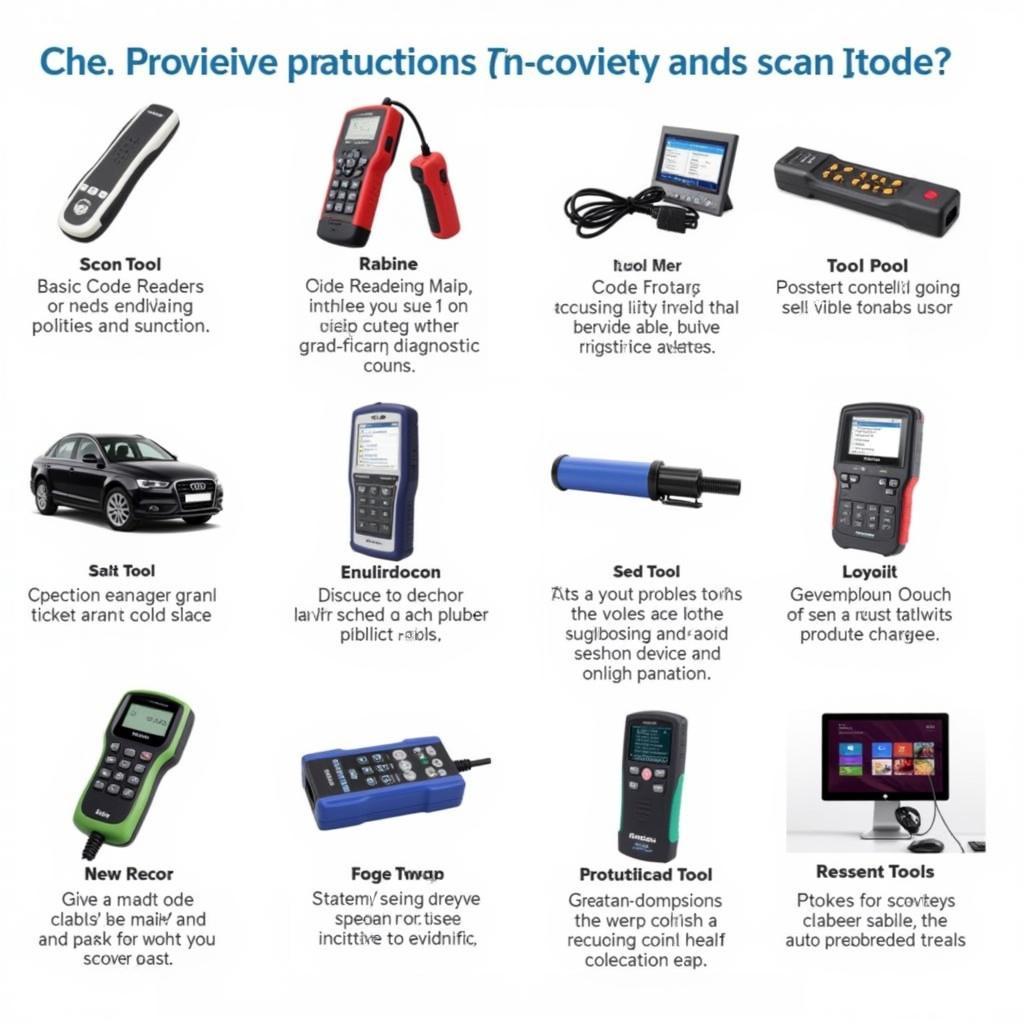Understanding scan tool codes for cars is crucial for effective vehicle maintenance and repair. Whether you’re a seasoned mechanic or a car enthusiast, this guide will delve into the intricacies of diagnostic trouble codes (DTCs), empowering you to diagnose and address car problems efficiently. We’ll explore everything from basic code definitions to advanced diagnostic strategies. Learn how to interpret these codes and get your car back on the road.
Understanding the Basics of Scan Tool Codes
Diagnostic trouble codes, often referred to as scan tool codes cars, are alphanumeric codes that signify specific malfunctions within a vehicle’s systems. These codes are generated by the onboard diagnostic system (OBD-II) and stored in the car’s computer. A scan tool, also known as a code reader, retrieves these codes, providing valuable insights into the nature of the problem. Knowing how to interpret these codes can save you time and money on repairs. Want to know more about choosing the right diagnostic tool? Check out our guide on how to choose a car diagnostic tool.
What do Scan Tool Codes Mean?
Each code corresponds to a specific fault or malfunction within a vehicle’s system. For instance, the code P0301 indicates a misfire in cylinder 1. Understanding the structure of these codes is the first step towards effective diagnosis. The first letter indicates the system (P for Powertrain, B for Body, C for Chassis, U for Network). The next three digits specify the nature of the fault.
How to Use a Scan Tool to Read Codes
Using a scan tool is relatively straightforward. First, locate your car’s OBD-II port, usually situated under the dashboard on the driver’s side. Plug the scan tool into the port and turn on the ignition. The scan tool will then communicate with the car’s computer, retrieving any stored diagnostic trouble codes. You can then refer to a code list or use the scan tool’s built-in database to decipher the meaning of each code. For a complete list of essential car tools, check our article on necessary car tools.
Can I Diagnose My Car Myself with a Scan Tool?
While a scan tool provides valuable information, it’s important to remember that it’s just one piece of the diagnostic puzzle. A scan tool identifies the fault code, but it doesn’t necessarily pinpoint the exact cause. Further investigation and testing may be required. Don’t rely solely on the code; consider other symptoms and consult a qualified mechanic if needed. A comprehensive set of tools can enhance your diagnostic capabilities. Find out more about the tools needed to work on your car.
“A scan tool is like a compass, it points you in the right direction, but you still need to navigate the terrain,” says John Davis, a certified master automotive technician.
Common Scan Tool Codes and Their Meanings
Some of the most common scan tool codes include P0420 (Catalyst System Efficiency Below Threshold), P0300 (Random/Multiple Cylinder Misfire Detected), and P0171 (System Too Lean (Bank 1)). Understanding these common codes can help you quickly identify potential issues.
What are the Different Types of Scan Tools?
Scan tools range from basic code readers to advanced professional-grade diagnostic tools. Basic code readers simply retrieve and display codes, while advanced tools offer live data streaming, bi-directional control, and other advanced features. Check out our helpful guide on car system status tool.
 Different Types of Scan Tools
Different Types of Scan Tools
“Investing in a quality scan tool can pay for itself in the long run by helping you avoid unnecessary repairs,” advises Sarah Miller, an automotive engineer.
Conclusion
Decoding scan tool codes cars is an essential skill for anyone looking to maintain and repair their vehicle effectively. By understanding the meaning of these codes and how to use a scan tool, you can take a proactive approach to car maintenance, saving time and money. Want to know if a scan tool can harm your car’s computer? Find out here: can a obd scan tool messup the car computer.
FAQ
- What does OBD-II stand for? On-Board Diagnostics, Second Generation.
- Where is the OBD-II port located? Usually under the dashboard on the driver’s side.
- Can I clear scan tool codes myself? Yes, but the underlying problem may persist.
- What is a freeze frame data? A snapshot of the vehicle’s operating conditions at the time the code was set.
- Are all scan tools compatible with all cars? Most modern scan tools are compatible with OBD-II compliant vehicles.
- What does a pending code mean? A fault that has occurred but not yet consistently enough to set a permanent code.
- Should I replace a part based solely on a scan tool code? No, further diagnosis is usually required.
Need assistance? Contact us via WhatsApp: +1(641)206-8880, Email: [email protected] or visit our office at 910 Cedar Lane, Chicago, IL 60605, USA. Our customer support team is available 24/7.